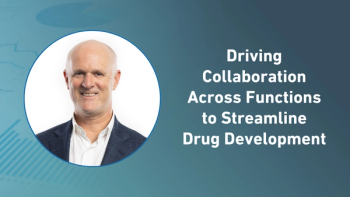
- Applied Clinical Trials-03-01-2023
- Volume 32
- Issue 3
Hints on Looming Changes to European Clinical Trial Rules
Reformed EMA looks to tackle challenges in drug development, pediatric medicines, and unmet medical need.
A deluge is coming. At the end of this month, European Union officials are scheduled to deliver their proposals for a wide-ranging update of the pharmaceutical rules that have been in force for a generation. They have been working on their plans for years—and have repeatedly deferred presenting them to the legislators in the European Parliament and the Council, because all this is such highly sensitive territory. But, finally, changes are on the way, including for clinical trials, and it’s going to take a lot of digesting: a leak of the likely contents seen by Applied Clinical Trials runs to well over 1,000 pages. In a bid to limit the overload, here’s a snapshot of officials’ thinking, drawn from the leaked documents, specifically dealing with clinical trials and drug development—with the heavy caution that the only official version of the text has still to be published.
There are measures aimed at supporting drug developers in generating clinical evidence “that meets the needs of the different authorities along the medicines’ lifecycle,” says the leak. A reformed European Medicines Agency (EMA) will be empowered to provide scientific advice in parallel with the scientific advice given by health technology assessment bodies, and to consult other national authorities with clinical trial expertise in providing scientific advice. The regulatory framework is to be given new flexibilities, to deal with emerging developments such as adapted clinical trials, use of real-world evidence, secondary use of health data, and linking the fashionable concept of “regulatory sandboxes”—essentially a looser exploratory space to cooperate on novel medicines.
EMA will be tasked with creating a European network of patient representatives, academics, drug developers, investigators, and centers with expertise in the performance of studies in the pediatric population. This will discuss priorities in the clinical development of drugs for children, in particular in areas of unmet medical need, and coordinate studies relating to pediatric treatments. It is designed to “build up the necessary scientific and administrative competencies at European level, and to avoid unnecessary duplication of studies and testing in the pediatric population.”
At the same time, the regulation of pediatric medicines will be made more agile to respond to the problems that can arise when a full clinical development plan for studies in children has to be agreed with EMA at very early stage. To ease the dilemma of developers who are obliged to make assumptions on the expected results, and then find themselves needing to modify their pediatric investigation plan (PIP), the concept is to be introduced of an “evolutionary” PIP. This foresees the agency agreeing that the development plan will be completed and new information submitted at precise development steps.
But new conditions will apply, too. The PIP waiver that has applied until now for adult products intended for a disease not present in children is to be limited. It will no longer be available where the molecule in question has a mechanism of action that may be efficacious against a different disease in children. “This provision, apart from increasing the number of medicines adequately studied for use in children, is also expected to foster innovation and research,” says the draft of the explanation annexed to the proposals. New and tighter obligations on trial reporting are also expected. After completion of a study, a summary of the results will have to be uploaded to the EU’s database, and for pediatric trials this has to be done within six months of the end of the study, whether or not the trial was terminated prematurely—except for “justified scientific reasons.”
Many other provisions in the unofficial draft text have direct implications for the clinical trials community. The familiar incentives for innovation will be recalibrated, with an emphasis on unmet medical need (UMN) “where research is most needed and investments are more risky.” Basic market exclusivity for orphans will be set at nine years, but at 10 years for meeting UMN—while “well-established use” orphans will be granted only five years of protection. However, a “bonus” market exclusivity extension of one year can be granted where the product is made widely available across the EU. The first two new indications of an orphan will be rewarded with one extra year of exclusivity each.
New criteria are to be set to identify products addressing UMN, including “if at least one of its indications diagnoses, prevents, or treats an orphan condition for which no satisfactory diagnosis, prevention, or treatment method exists or a satisfactory diagnosis, prevention, or treatment method exists and it has been demonstrated by the applicant that such a product will bring exceptional therapeutic advancement. And in both cases, the product will have to provide for “a meaningful reduction in disease morbidity or mortality for the relevant part of the population.”
Peter O'Donnell is ACT's Brussels Correspondent.
Articles in this issue
over 2 years ago
Population Representation: Everyone Must Play a Partover 2 years ago
The Impact of Trial Design on Interest by Race and Ethnicityover 2 years ago
Tackling Trial Diversity Through Higher Innovation Standardsover 2 years ago
Strategies for Building Greater DE&I in Rare Disease Trialsover 2 years ago
eCOA Systems and the CE Mark: Navigating the Regulationsover 2 years ago
Quality Tolerance Limits: A Review of Industry Trendsover 2 years ago
Diversity Plans, Sharing for Meaningful Changeover 2 years ago
Is it Time to Adjust Our Approach to Learning?over 2 years ago
Applied Clinical Trials March 2023 Issue (PDF)Newsletter
Stay current in clinical research with Applied Clinical Trials, providing expert insights, regulatory updates, and practical strategies for successful clinical trial design and execution.





.png)



.png)



.png)
.png)
